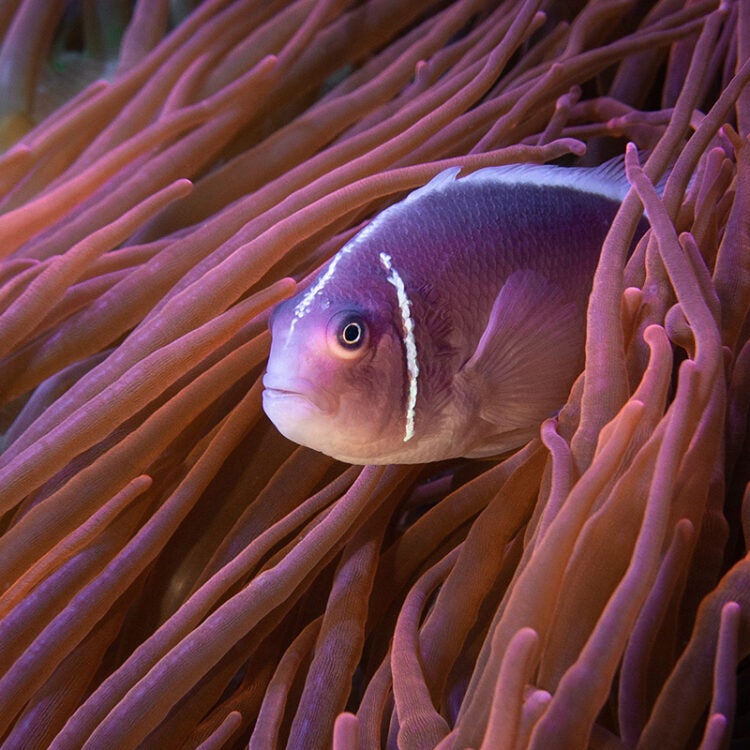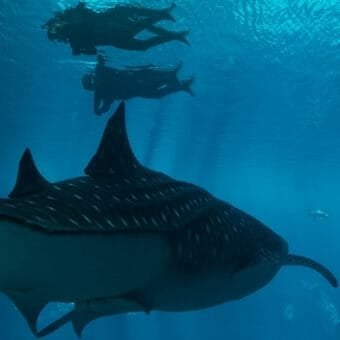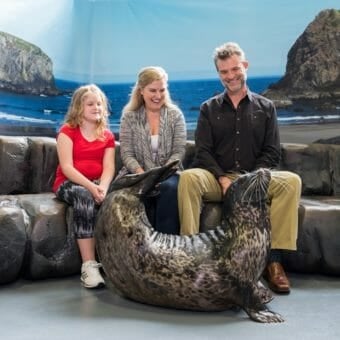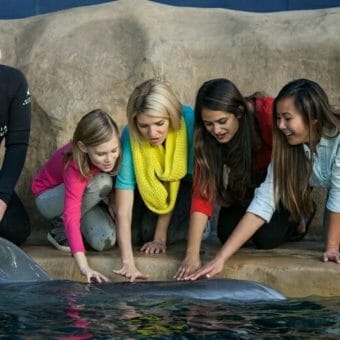-
Size
2 inches (5 cm) -
Diet
Phytoplankton, zooplankton -
Range
Indo-Pacific -
Habitat
Brackish or marine water on lagoons and seaward reefs
Physical Characteristics
- Adults appear pink to orange in coloration. Its fins are either very light or transparent. A white stripe runs dorsally from its head to the caudal fin and a vertical stripe visually separates the head from the rest of its body.
- Mouth adapted with pharyngeal teeth and with a shape ideal for suction feeding.
- Individuals may grow to 4 inches (10 cm) in length, though they more commonly reach 1.8-2.2 inches (4.6-5.5 cm).
- The mucus on its flesh protects it from stings by host anemone.
Animal Fact
This clownfish rarely leaves the area immediately surrounding its host anemone.
Diet / Feeding
- Diet consists of phytoplankton – including blue-green algae and diatoms – zooplankton and zoobenthos.
- Feeds in the area surrounding its host anemone, as well as scraps uneaten by the anemone itself. It accomplishes this by using the method of “suction-feeding,” essentially vacuuming up around the anemone.
Range / Habitat
- Occurs in the Indo-Pacific from the Great Barrier Reef through the Indo-Australian Archipelago and the Gulf of Thailand to the Eastern Indian Ocean.
- Found in brackish marine water on lagoons and seaward reefs at depths ranging from 1-125 feet (1-38 m). Common depth does not exceed 13 feet (4 m).
- Non-migratory, in fact, this clownfish rarely leaves the area immediately surrounding its host anemone.
Reproduction & Growth
- Individuals are born male. The largest in the group changes sex to female, second largest is the dominant male.
- While the species aggregates in groups, only one dominant pair will reproduce.
- If the female of the monogamous mating pair dies, the largest male from the group will change gender to become a mating female. The second largest male then becomes the mating male.
- In a year, a mating pair will produce 2,000-4,000 eggs.
- Eggs, once hatched, leave the host anemone and become planktonic.
Conservation Status
- “Least Concern” on the IUCN Red List.
Additional Information
- Also known as the “pink anemonefish,” “salmon clownfish,” “white-maned anemonefish” and “white-banded anemonefish.”
- Active during the day (diurnal).
- Primary predators include grouper. The anemone host provides protection.
Sources
- www.fishbase.org
- http://animaldiversity.ummz.umich.edu/accounts/Amphiprion_perideraion/





